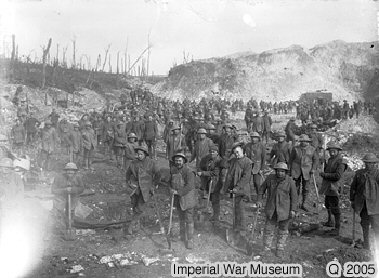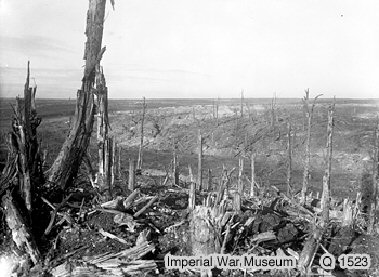 |
World War | All Families |
| Page 1 of 1 |
 |
World War | All Families |
| Page 1 of 1 |
The Battles of the Somme: the Battle of the Ancre, 13 - 18 November 1916. | |
| Fifth Army´s long-delayed offensive astride the Ancre represented a much-reduced version of the optimistic original scheme; its core objective was now the elimination of the German salient between the Albert-Bapaume road and Serre, with Beaumont-Hamel at its head. V Corps was tasked with the main attack eastward against the German defences north of the Ancre; south of the river, II Corps would seize the enemy lines beyond the recently-captured Schwaben Redoubt down to St Pierre Divion. | |
 A working party in a quarry at Beaumont-Hamel on 16 November |
The general assault was launched amidst a tremendous artillery bombardment in darkness and thick fog at 5.45am on Monday 13 November. The attackers had to contend with deep mud, heavy enemy fire and poor visibility. On the extreme left of V Corps, 3rd Division struggled through the mire at great cost towards Serre; isolated groups forced their way past barely cut wire but were gradually forced to retire. 2nd Division´s advance on Redan Ridge faired little better. On the immediate right, 51st Division had more success and after difficult fighting secured Beaumont-Hamel (with many prisoners) by afternoon. Further south 63rd Division vigorously pushed on to the very outskirts of Beaucourt by evening. South of the Ancre, 39th Division advanced with excellent artillery support to capture St Pierre Divion by 7.40am. |
| The day´s partial successe induced Gough to resume the attack on the 14th, during which the only notable achievement was 63rd Division´s occupation of Beaucourt. Political considerations prompted an adjustment in operations which resumed, in appalling conditions, on 18 November when the 32nd and 37th Divisions secured ground south of Serre and some small gains were won south of the Ancre following costly advances by the 19th, 18th and 4th Canadian Divisions. The objectives of the battle were not achieved; only in the marshy lowlands near the river were gains made, and these at great cost. On 19 November, with winter rain again enshrouding the battlefield, offensive operations were called off. | |
Postscript: Beginning in the height of summer, Allied offensive operations on the Somme were brought to an end just over four and half months later by adverse weather conditions: the autumn rains and early winter sleet and snow having turned the battlefield into a barely navigable morass. Attempts merely to exist in such conditions became almost intolerable physical ordeals. The fighting had led to no significant breakthrough for the Allied forces: the territorial results of over four months of relentless assaults on German defence lines had yielded a meagre harvest of gains: a strip, approximately twenty miles wide by six miles deep, was wrested from German possession and this at an enormous cost in casualties. |
 General view of the battlefield at Beaumont-Hamel showing the blasted land, November 1916 |
| British and Commonwealth forces were calculated to have lost 419,654 (dead, wounded and missing); French losses amounted to 204,253. German casualties were estimated to have been between 437,000 to 680,000. | |
Correct as at 1st December 2020